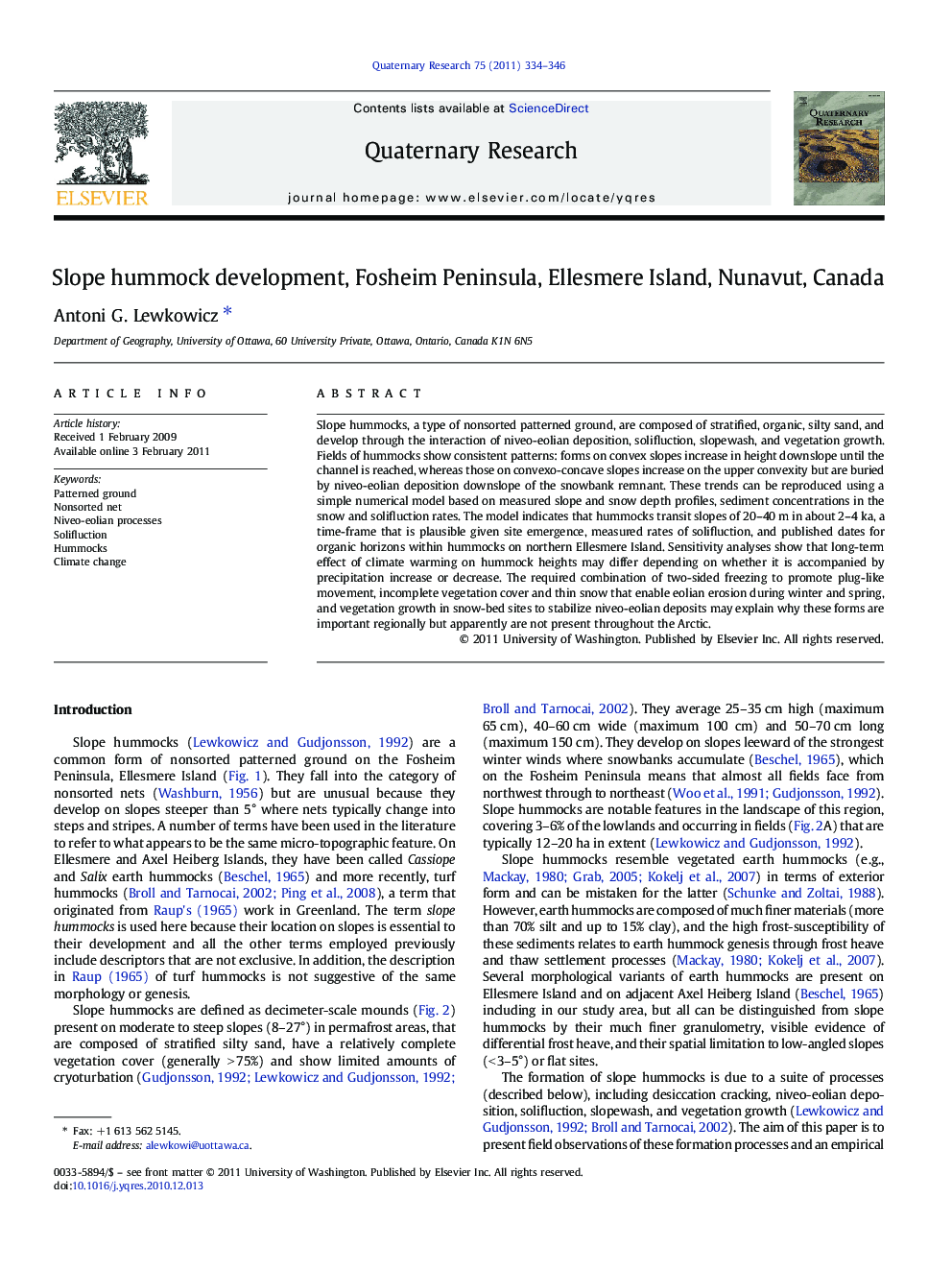| کد مقاله | کد نشریه | سال انتشار | مقاله انگلیسی | نسخه تمام متن |
|---|---|---|---|---|
| 1045593 | 944823 | 2011 | 13 صفحه PDF | دانلود رایگان |

Slope hummocks, a type of nonsorted patterned ground, are composed of stratified, organic, silty sand, and develop through the interaction of niveo-eolian deposition, solifluction, slopewash, and vegetation growth. Fields of hummocks show consistent patterns: forms on convex slopes increase in height downslope until the channel is reached, whereas those on convexo-concave slopes increase on the upper convexity but are buried by niveo-eolian deposition downslope of the snowbank remnant. These trends can be reproduced using a simple numerical model based on measured slope and snow depth profiles, sediment concentrations in the snow and solifluction rates. The model indicates that hummocks transit slopes of 20–40 m in about 2–4 ka, a time-frame that is plausible given site emergence, measured rates of solifluction, and published dates for organic horizons within hummocks on northern Ellesmere Island. Sensitivity analyses show that long-term effect of climate warming on hummock heights may differ depending on whether it is accompanied by precipitation increase or decrease. The required combination of two-sided freezing to promote plug-like movement, incomplete vegetation cover and thin snow that enable eolian erosion during winter and spring, and vegetation growth in snow-bed sites to stabilize niveo-eolian deposits may explain why these forms are important regionally but apparently are not present throughout the Arctic.
Journal: Quaternary Research - Volume 75, Issue 2, March 2011, Pages 334–346